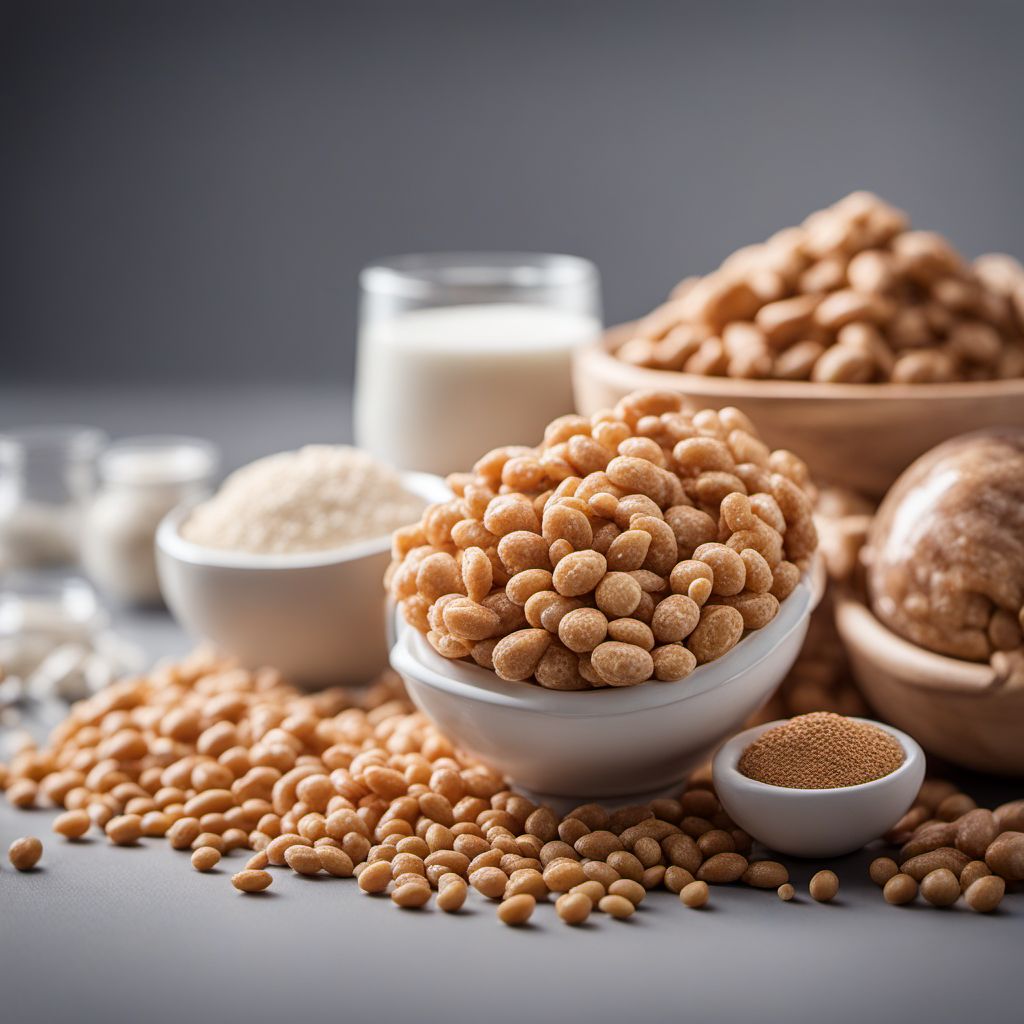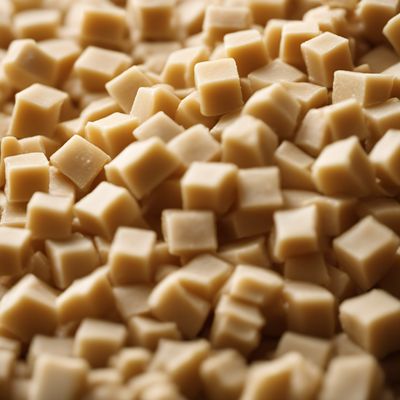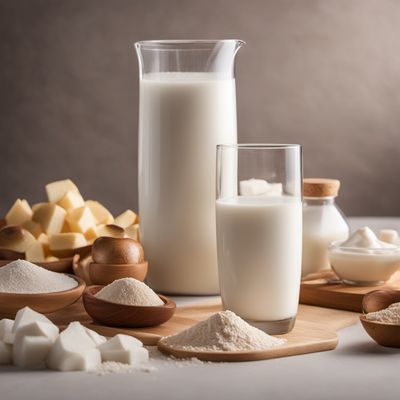
Ingredient
Isolated proteins and other protein products
The Power of Pure Protein: Unleashing the Potential of Isolated Proteins
Isolated proteins and other protein products are derived from various sources such as plants, animals, and dairy. These ingredients undergo a process to remove other components, leaving behind a highly concentrated protein powder or product. They come in different forms, including whey protein, soy protein isolate, pea protein, and more. Isolated proteins are known for their high protein content, low fat and carbohydrate content, and are often used by athletes, fitness enthusiasts, and individuals looking to increase their protein intake. They have a fine texture and are easily soluble, making them suitable for a wide range of culinary applications.
Origins and history
The use of isolated proteins in food dates back to ancient times, where civilizations like the Greeks and Romans recognized the importance of protein-rich foods for strength and vitality. However, the process of isolating proteins from their sources and creating protein powders or products became more prevalent in the 20th century with advancements in food processing technology. Today, isolated proteins are widely used in the food industry and have become a staple ingredient in sports nutrition, dietary supplements, and various food products.
Nutritional information
Isolated proteins are a powerhouse of nutrition, providing a concentrated source of protein. They are typically low in fat and carbohydrates, making them an excellent choice for individuals following high-protein, low-fat diets. They are also rich in essential amino acids, which are vital for muscle growth, repair, and overall health.
Allergens
Some isolated proteins, such as whey protein and soy protein, may trigger allergies in individuals who are sensitive to dairy or soy. It is important to check the labels and consult with a healthcare professional if you have any known allergies or dietary restrictions.
How to select
When selecting isolated proteins, it is important to consider the source and quality. Look for reputable brands that use high-quality ingredients and have undergone rigorous testing for purity and safety. Check for certifications such as NSF or Informed-Sport to ensure the product is free from contaminants. Additionally, consider your specific dietary needs and preferences, such as choosing plant-based proteins for vegan or vegetarian diets.
Storage recommendations
To maintain the freshness and quality of isolated proteins, store them in a cool, dry place away from direct sunlight. Seal the packaging tightly after each use to prevent moisture or air from affecting the product. Follow the manufacturer's instructions for specific storage recommendations, as some protein products may require refrigeration.
How to produce
Producing isolated proteins at home is a complex process that requires specialized equipment and knowledge. It is best left to professional manufacturers who have the expertise and resources to ensure the quality and safety of the final product.
Preparation tips
Isolated proteins can be easily incorporated into various recipes and dishes. They can be added to smoothies, shakes, or baked goods to boost their protein content. When using isolated proteins in recipes, it is important to follow the recommended serving size to achieve the desired nutritional balance. Experiment with different flavors and combinations to find your preferred taste. Additionally, consider the texture of the protein powder and adjust the liquid content accordingly to achieve the desired consistency.
Culinary uses
Isolated proteins are commonly used in protein shakes, smoothies, protein bars, and protein-rich baked goods such as protein pancakes or protein cookies. They can also be added to soups, sauces, and dressings to enhance their nutritional value. Isolated proteins are versatile and can be used in both sweet and savory dishes, making them a valuable ingredient in the culinary world.
Availability
Isolated proteins and other protein products are widely available in grocery stores, health food stores, and online retailers. They can be found in various forms, including protein powders, protein bars, and ready-to-drink protein shakes.
More ingredients from this category

Soya proteins
The Plant-Based Powerhouse

Hyaluronic acid
The Fountain of Youth for Your Skin

Gelatine
The Versatile Protein: Unveiling the Secrets of Gelatine

Gluten
The Protein Powerhouse: Unveiling the Secrets of Gluten

Whey protein
The Powerhouse of Protein: Whey Protein

Milk protein
The Power of Milk Protein

Collagen
The Beauty Booster: Collagen